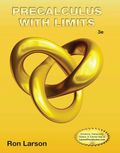
Concept explainers
a.
Use the regression feature of a graphing utility to find a model of the form
a.
Answer to Problem 12PS
Explanation of Solution
Given information:
The heat exchanger of a heating system has a heat probe attached to it. The temperature
Use the regression feature of a graphing utility to find a model of the form
Calculation:
Consider the following data
To find the quadratic regression model using the graphing utility
Press stat. The display will be
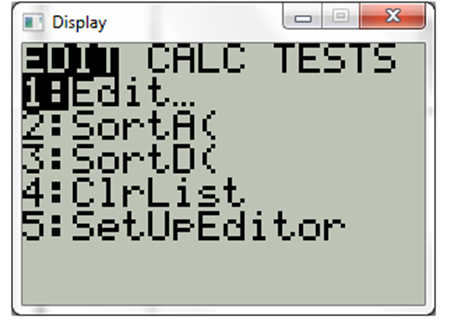
Now press edit. The display will be

Now type in data provided. The display will be

Now press stat and choose calc. The display will be
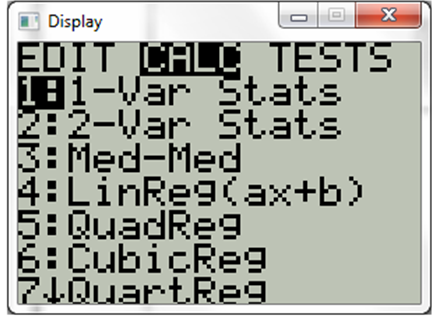
Now press QuadReg. The display will be
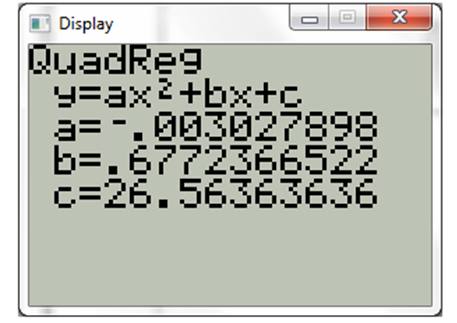
Hence, the quadratic regression model of the baove data is
b.
Verify that the model fit according to the data.
b.
Answer to Problem 12PS
The model fits the data well with least devition.
Explanation of Solution
Given information:
The heat exchanger of a heating system has a heat probe attached to it. The temperature
Use the graphing utility to graph
Calculation:
Consider the following data
To plot the function, proceed as follows.
Press 2nd

Now select on under plot
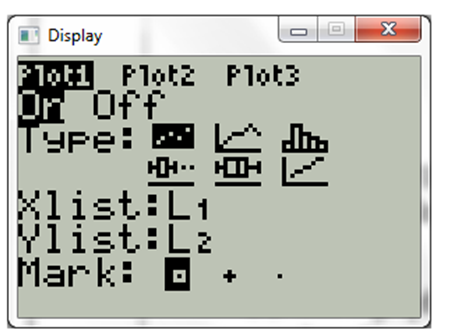
Now choose window and choose the proper scale. The display will be

Now choose
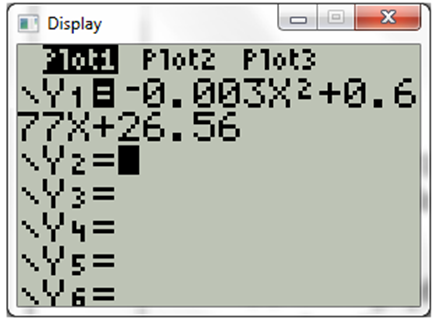
Now press graph. The display will be
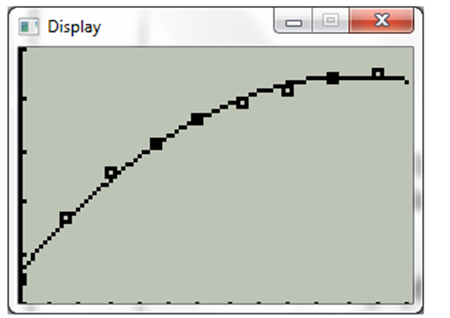
The derivation between the scatter plot of the points and the equation obtained from regression model is minimal.
Hence, the model fits the data well with least devition.
c.
Verify that the model fit according to the data.
c.
Answer to Problem 12PS
The model fits the data well with least deviation.
Explanation of Solution
Given information:
The heat exchanger of a heating system has a heat probe attached to it. The temperature
A rational model for the data is given by
Use the graphing utility to graph
Calculation:
Consider the following data
Consider the rational model of the data
To graph the model using the graphing utility with original values of
Press stat and choose edit. The display will be
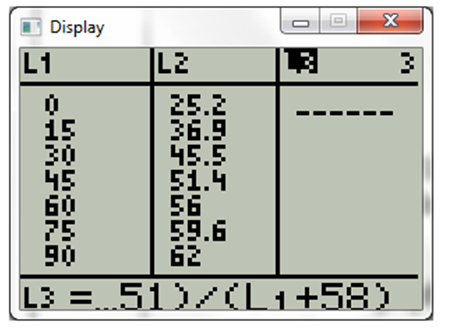
Now type in the function and display will be

Now choose 2nd
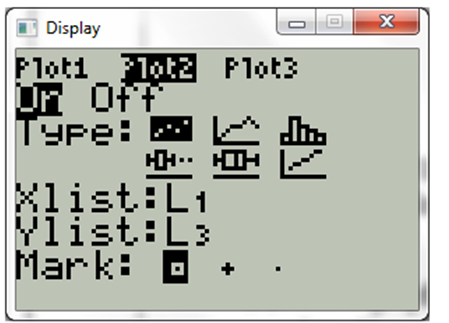
Now press graph. The display will be
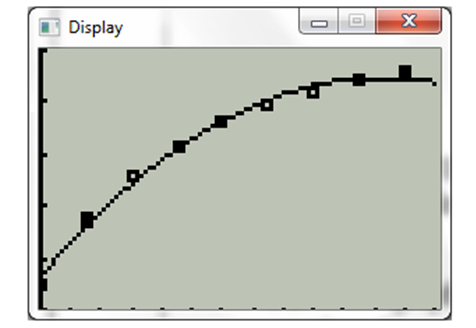
The deviation between the scatter plot of the points, the equation obtained from the regression model and the data evaluated for
Hence, the model fits the data well with least deviation.
d.
Evaluate
d.
Answer to Problem 12PS
Explanation of Solution
Given information:
The heat exchanger of a heating system has a heat probe attached to it. The temperature
Evaluate
Calculation:
Consider the following data
Now move up the arrow key to obtain the value of
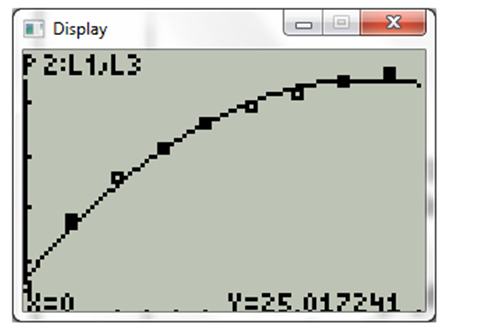
Hence, the value
e.
Find the
e.
Answer to Problem 12PS
Explanation of Solution
Given information:
The heat exchanger of a heating system has a heat probe attached to it. The temperature
Find
Calculation:
Consider the following data
Now consider the limit of the function
To determine the limit of the function, proceed as follows.
Divide both numerator and denominator by
f.
Explain your reasoning.
f.
Answer to Problem 12PS
The functional relationship between temperature and time is discrete in nature.
Explanation of Solution
Given information:
The heat exchanger of a heating system has a heat probe attached to it. The temperature
Interpret the result of part (e) in the context of the problem. Is it possible to perform this type of analysis using
Calculation:
Consider the following data
The time
This type of analysis is not possible using the data provided for
Hence, the functional relationship between temperature and time is discrete in nature.
Chapter 12 Solutions
EBK PRECALCULUS W/LIMITS
 Calculus: Early TranscendentalsCalculusISBN:9781285741550Author:James StewartPublisher:Cengage Learning
Calculus: Early TranscendentalsCalculusISBN:9781285741550Author:James StewartPublisher:Cengage Learning Thomas' Calculus (14th Edition)CalculusISBN:9780134438986Author:Joel R. Hass, Christopher E. Heil, Maurice D. WeirPublisher:PEARSON
Thomas' Calculus (14th Edition)CalculusISBN:9780134438986Author:Joel R. Hass, Christopher E. Heil, Maurice D. WeirPublisher:PEARSON Calculus: Early Transcendentals (3rd Edition)CalculusISBN:9780134763644Author:William L. Briggs, Lyle Cochran, Bernard Gillett, Eric SchulzPublisher:PEARSON
Calculus: Early Transcendentals (3rd Edition)CalculusISBN:9780134763644Author:William L. Briggs, Lyle Cochran, Bernard Gillett, Eric SchulzPublisher:PEARSON Calculus: Early TranscendentalsCalculusISBN:9781319050740Author:Jon Rogawski, Colin Adams, Robert FranzosaPublisher:W. H. Freeman
Calculus: Early TranscendentalsCalculusISBN:9781319050740Author:Jon Rogawski, Colin Adams, Robert FranzosaPublisher:W. H. Freeman
 Calculus: Early Transcendental FunctionsCalculusISBN:9781337552516Author:Ron Larson, Bruce H. EdwardsPublisher:Cengage Learning
Calculus: Early Transcendental FunctionsCalculusISBN:9781337552516Author:Ron Larson, Bruce H. EdwardsPublisher:Cengage Learning





